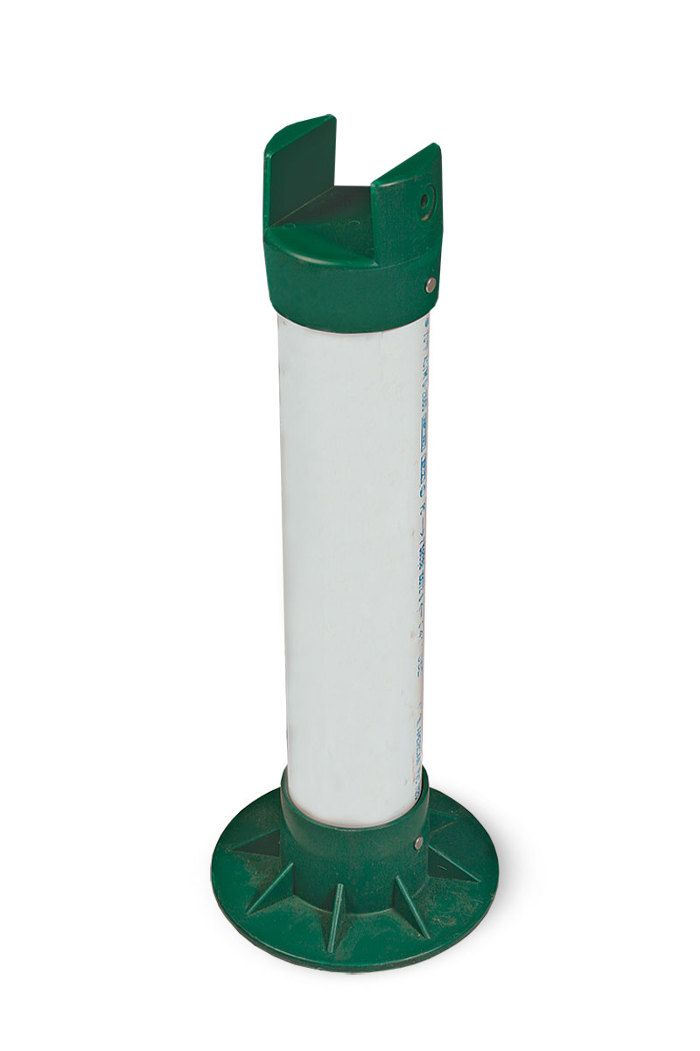
by Rick Arnold
I used to dread the grunt work of hauling cinder blocks, gravel, and especially wet concrete when making a shed foundation. A few years ago, eager to find an alternative, I tried the Redi-Footing (www.redifooting.com).
Designed to exploit the strength and durability of schedule-40 PVC pipe, these piers require no concrete or cinder blocks, and can handle a load of 10,000 lb. as soon as the hole is backfilled.
Setting the piers is simple. Once the holes are dug, I drop in each Redi-Footing base with a length of PVC pipe attached. I establish a level line for all the piers, cut the schedule-40 pipe to length, then set each base, pipe, and cap assembly in its hole.
The cap accepts a 31⁄2-in.-thick beam. I finish by tamping the backfill. A Redi-Footing (cap and base pieces) costs about $32.
| Read the complete article… Short Cuts to a Shed Time-saving tips about planning, materials, and construction that will get any outbuilding up in a hurry by Rick Arnold |
 |
Fine Homebuilding Recommended Products
Fine Homebuilding receives a commission for items purchased through links on this site, including Amazon Associates and other affiliate advertising programs.

Reliable Crimp Connectors

8067 All-Weather Flashing Tape

Handy Heat Gun

Plastic piers require no concrete or cinder blocks, and they can handle a load of 10,000 lb. as soon as the hole is backfilled.



























View Comments
This is very interesting, where can I obtain information on the manufacturer of these plastic piers?
OneRenoHome
Visit Redi-Footing’s site at: http://www.redifooting.com/. Once you’ve got the info you need, (for fun) click on their picture gallery, where you can see photos of an elephant balancing on a footing. That’s pretty amazing considering we’re talking about plastic here. Alternatively, if you want to talk to a person, call them toll free at (866) 586-6082.
--Robyn
I wonder about the uv deterioration problem. If i was to build a deck and say 15 years in the future the family dog unburies the pvc, i imagine there could be trouble. Also, if you bury it to the bottom of the cap, in the future, if debris builds up won't this lead to ground contact with the wood and cause rot, etc? If i could be thoroughly convinced this will never be an issue it sound like this could be a very good product that i would use all the time.
ok so whats better 4x4 post or 6x6 i'm building a 24'x24' free standing deck in minnesota and i want to now whats safer to use for that load ??
Verygood - No worry on deterioration if you follow the instructions. 1 The green caps are UV stabilized. 2 The PVC pipe only goes to grade therefore covered. 3 How much sun will actually reach the ground - sure it depends on the deck configuration and sun exposure angle but for the most part there isn't an issue even if it gets exposed a little. 4 if the earth berms up to the top of the post cap and touches the wood deck post then you have the same problem you get when the earth berms up around a concrete deck footing and post bracket.
I've painted the pvc green or brown when I expect there will be soil settling. When the pipe is exposed, it's got UV protection by virtue of the paint. Another solution is to wrap the pvc pipe with a short section of 6 inch galv duct or wrap it with a piece of aluminum or pvc coil stock.
There are lots of solutions to the pipe exposure problem.
reikiguy2003 You have to do some calculations to determine what is best without going overkill. For the most part, if your beam is a 2ply 2x and you aren't maxing out the beam span then 4x4's will be fine provided the deck isn't too high off grade. When posts are tall, you either need a larger size (6x6) or lateral bracing to resist bending.